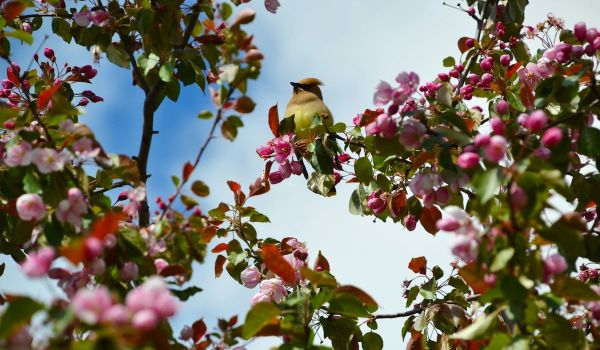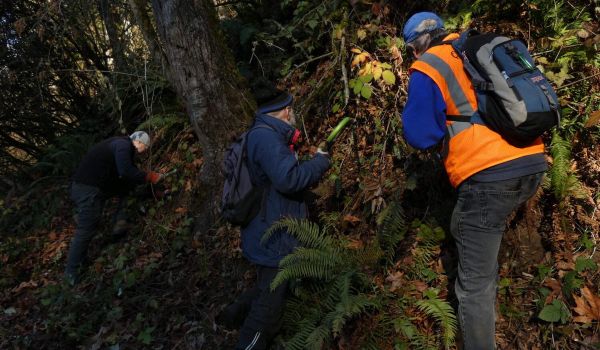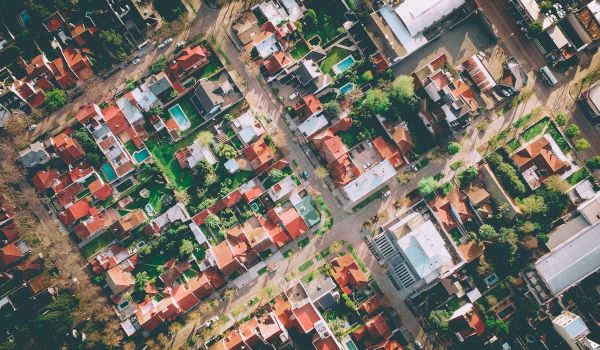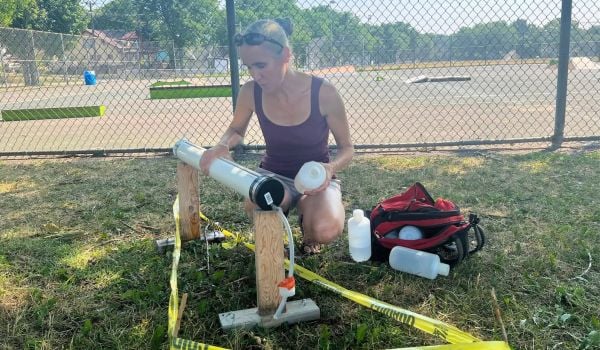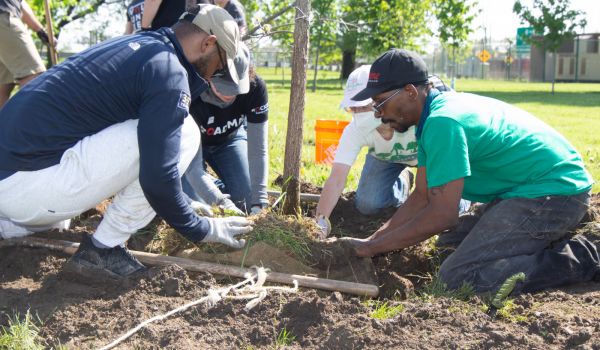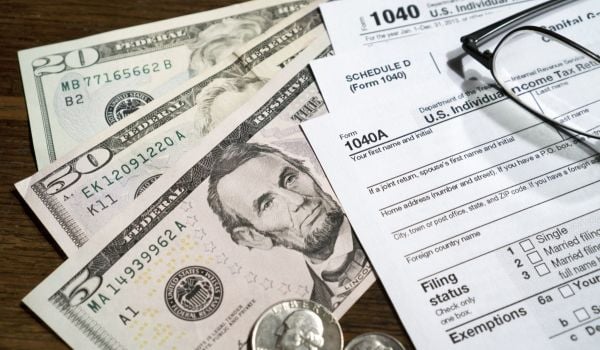Whether towering Trees of Heaven or noxious-smelling Callery Pears that make you wrinkle your nose every spring, the trees along our neighborhoods’ streets are essential parts of our cities. Studies show that they absorb air pollutants, keep cities cool and prevent flooding. “I think the most crucial and the most urgent benefits are some of the climate resiliency benefits that the trees provide,” says Brian Wiedenmeier, executive director at Friends of the Urban Forest, a non-profit organization that plants and maintains trees in San Francisco, California.
To further these benefits, the City of San Francisco plans to install a new street tree nursery to cultivate trees for local planting projects. The new nursery will be established in the South of Market neighborhood and support historically underserved communities. It’s part of a larger commitment to environmental justice and a plan to improve the city’s urban forest, which Wiedenmeier says is desperately needed. “San Francisco has one of the lowest urban forest canopies of any major city in the United States,” he says.
According to analysis from the San Francisco Chronicle, only about 15% of San Francisco has tree cover. Meanwhile, Los Angeles has a tree canopy cover of about 21%, while roughly 30% of Seattle and Portland are forested. San Francisco’s small urban forest is partly the result of its natural landscape, which was a patchwork of sand dunes, grasslands, and wetlands when Europeans colonized the area in the 19th century. There were never many trees in the area, and as San Francisco developed, not many were planted either.
However, San Francisco’s tree coverage also varies significantly between neighborhoods, and those differences are often the result of historical policies that have neglected and excluded communities of color and other minority groups. “Those neighborhoods where environmental impacts are most acutely felt…happen to be neighborhoods with higher portions of non-white residents, with seniors and people with disabilities, families with children, and lower-income San Franciscans. Those also happen to be the neighborhoods with the lowest existing canopy coverage,” says Wiedenmeier.
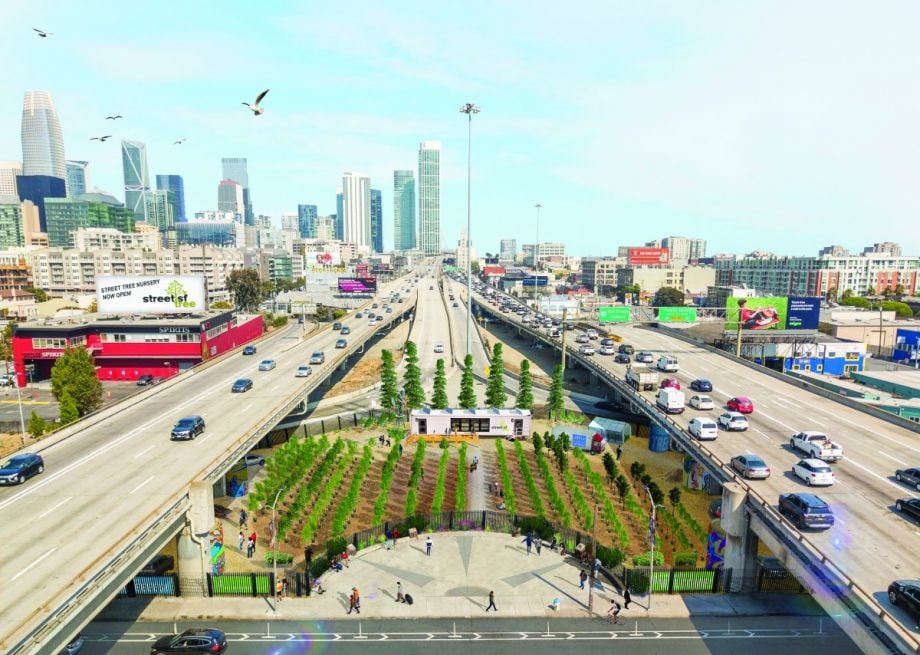
The vision for the nursery (Rendering courtesy of the Department of Public Works)
While wealthier and majority-white neighborhoods like Presidio and Seacliff enjoy canopy cover of about 30% each, communities of color in Chinatown and Downtown/Civic Center have only about 5% canopy cover. The South of Market neighborhood where the new nursery will be built has the lowest percentage of tree canopy cover in the city at only 4.1%. “I think we can draw [a link] to how redlining has impacted Black and brown communities,” says Wiedenmeier. “The reason that the city and others have not invested in trees there goes back to a lot of the historic disinvestment or lack of investment in those neighborhoods.”
Knowledge of this history helped lead the City of San Francisco team when it chose the location for the new nursery. It will be installed in a neglected urban lot on 5th Street, between the on- and off-ramps to Interstate 80 near the Bay Bridge. The surrounding area is home to much of the city’s vibrant Filipino community. Increased air pollution from dense vehicle traffic in a community of color makes the space an “environmental justice hot spot,” says Jon Swae, Manager of Contracts, Grants, and Initiatives at the San Francisco Department of Public Works.
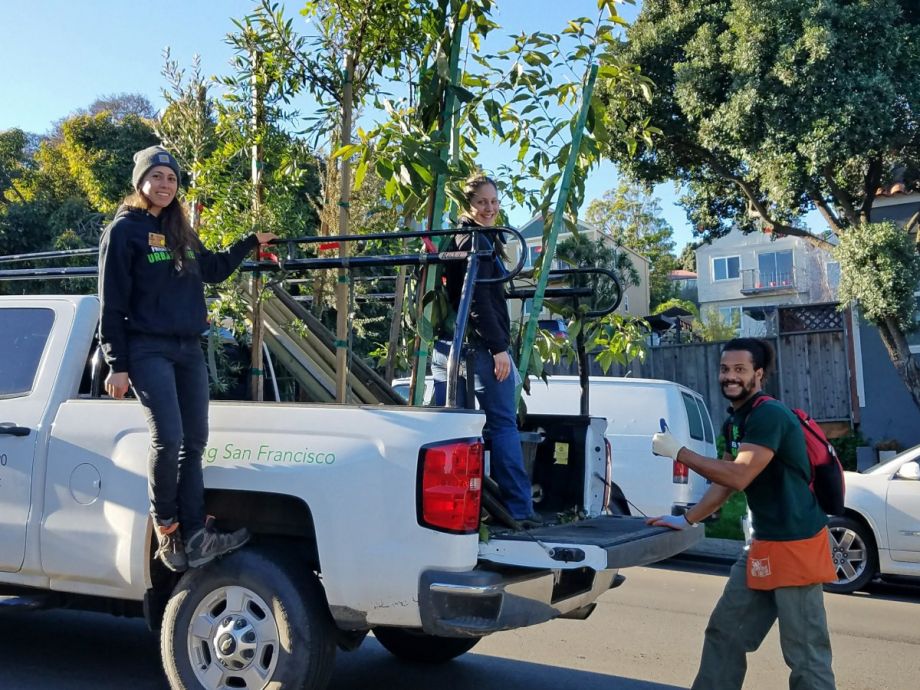
(Photo courtesy of Friends of the Urban Forest)
While its effect on surrounding air pollution will be marginal in the short term, Swae hopes that establishing the nursery in the South of Market neighborhood will send a message about the city’s commitment to climate justice. “Locating the nursery here demonstrates the City of San Francisco’s commitment to taking action on environmental justice, climate protection, and equitable access to trees and green space,” he says. These issues are also addressed in the city’s Racial and Social Equity Action Plan and an Environmental Justice Framework within the San Francisco General Plan.
The nursery is designed to have some more immediate positive effects on the neighborhood. Once operational, it will offer a workforce development program to provide transitional employment and job readiness- and placement support services to folks who often face employment barriers. “Since various urban forestry jobs have low barriers to entry, basic landscape and arboriculture training programs can create accessible career pathways for those shut out of traditional employment,” Swae explains. The program will target unhoused, formerly unhoused, and formerly incarcerated community members.
After securing grant funding via the Clean California Initiative, Swae says preparations for the nursery will begin on-site this summer, with most nursery infrastructure slated for installation later in the year and construction completed by July 2023. As work ramps up, the City of San Francisco team is receiving guidance from established organizations like Friends of the Urban Forest and Our City Forest, a non-profit with decades of experience engaging in urban forest-related outreach and education and providing trees and shrubs to private residences, schools, and parks across Santa Clara County from its Community Nursery and Training Center in San Jose.
“We’re providing technical assistance and background information about how a nursery operates and what it takes to get trees cultivated,” Rhonda Berry, CEO of Our City Forest, explains. Both organizations say they support the project because they see its potential to not only build a denser and more resilient urban forest but also to bring communities together and create social change. Swae says he hopes that the new nursery will “become a community and educational center for urban forestry and climate action.”

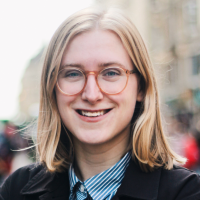
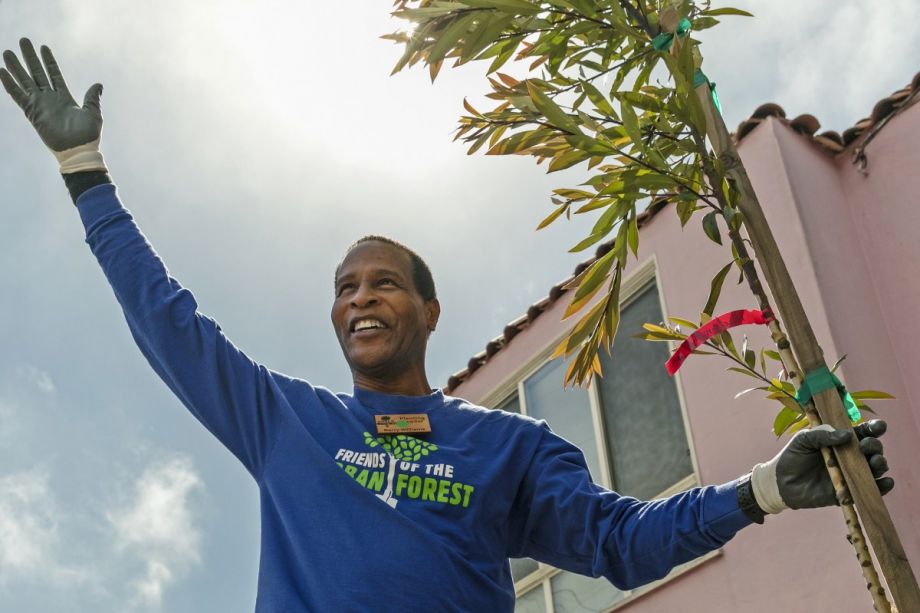
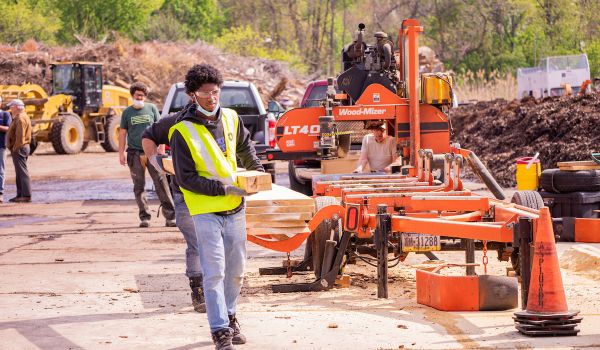
_600_350_80_s_c1.jpg)
